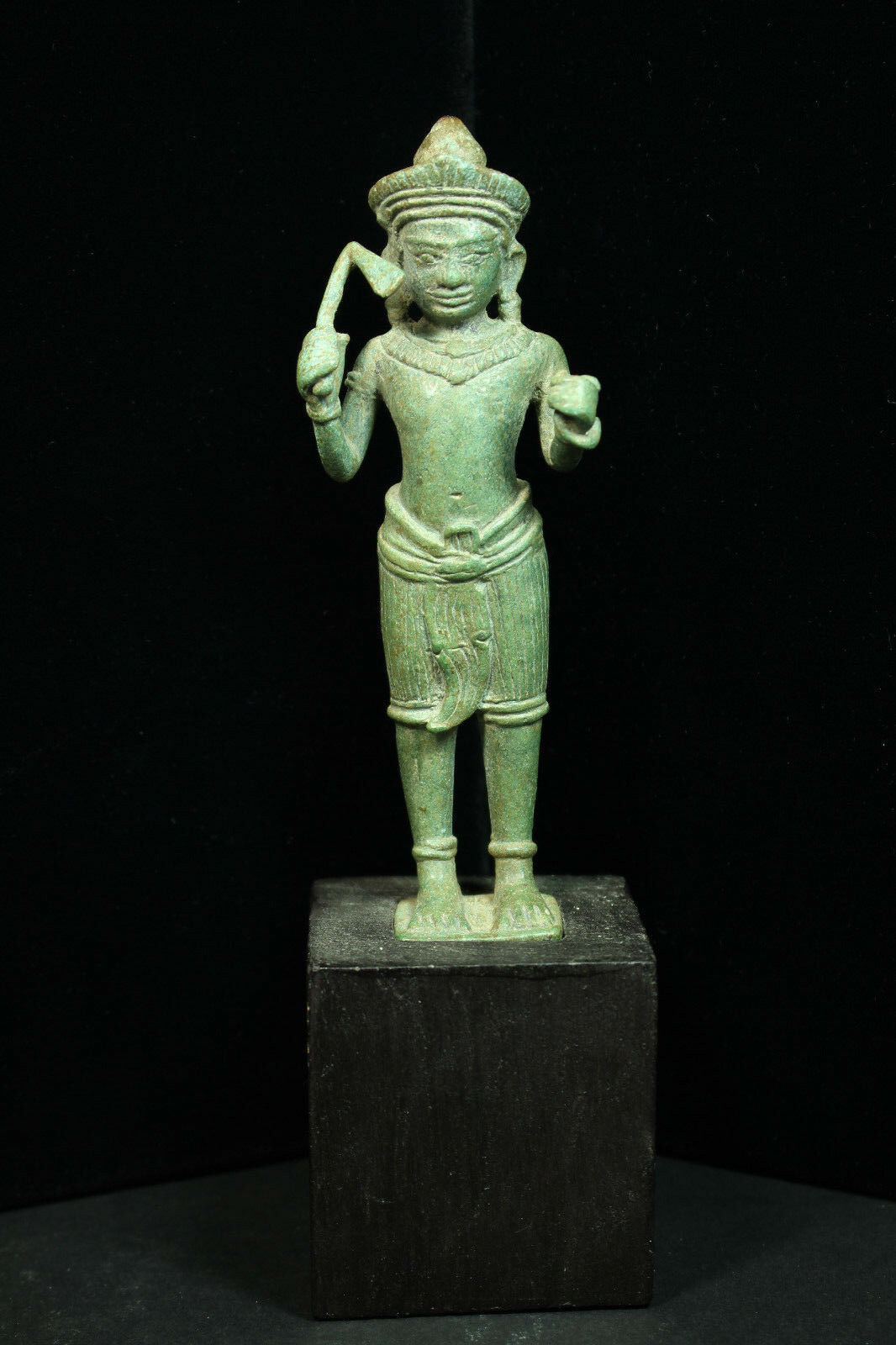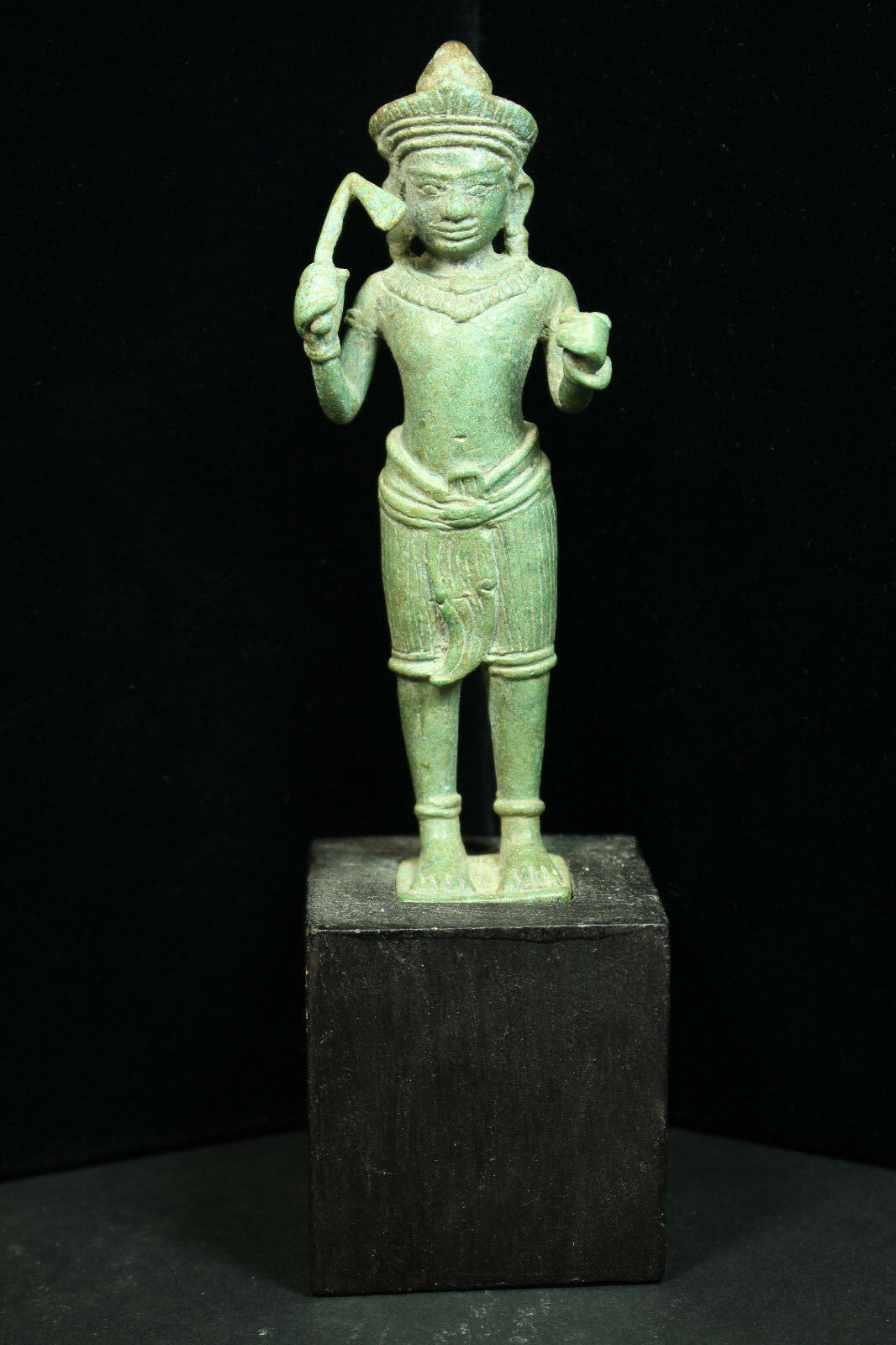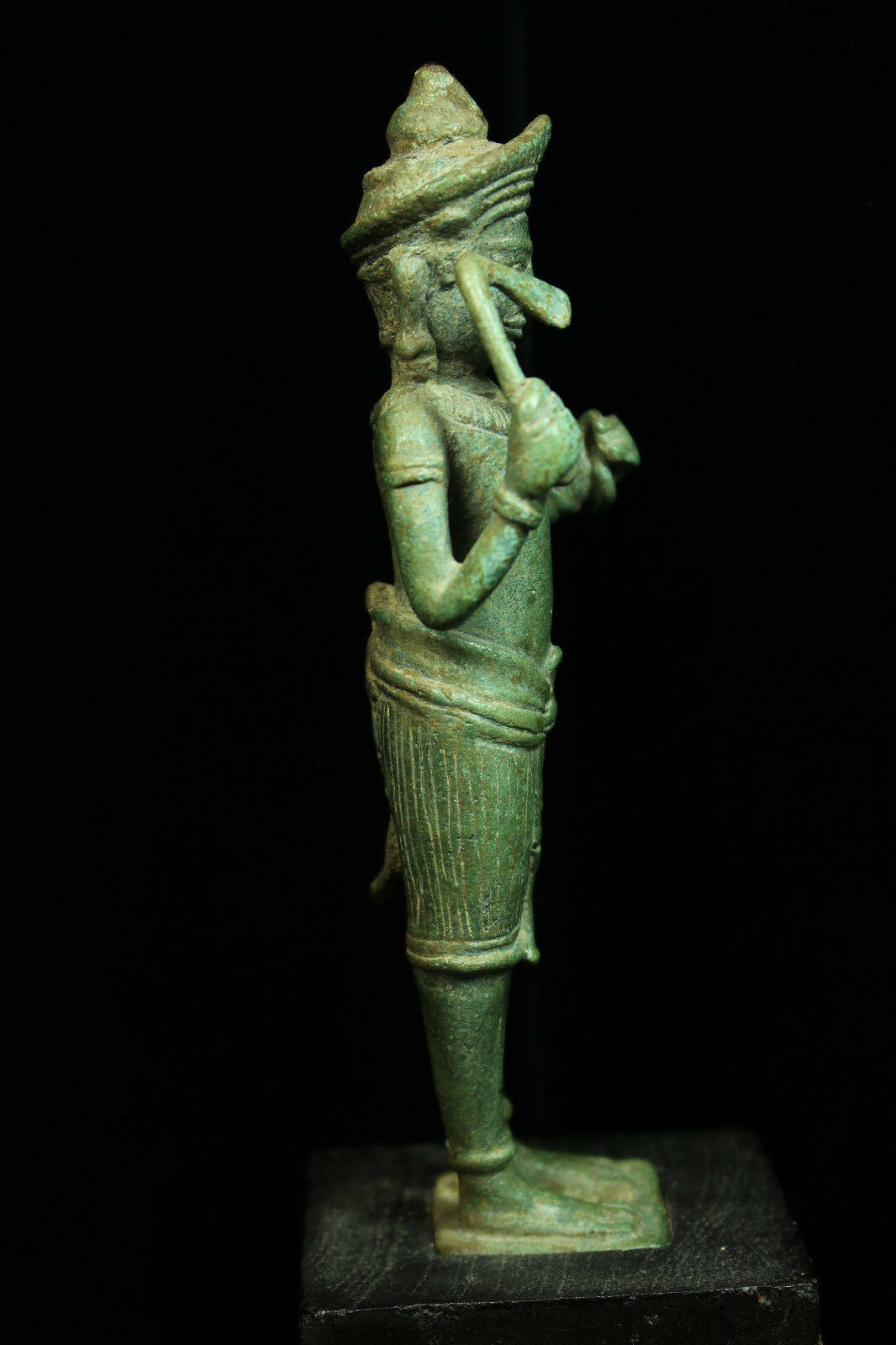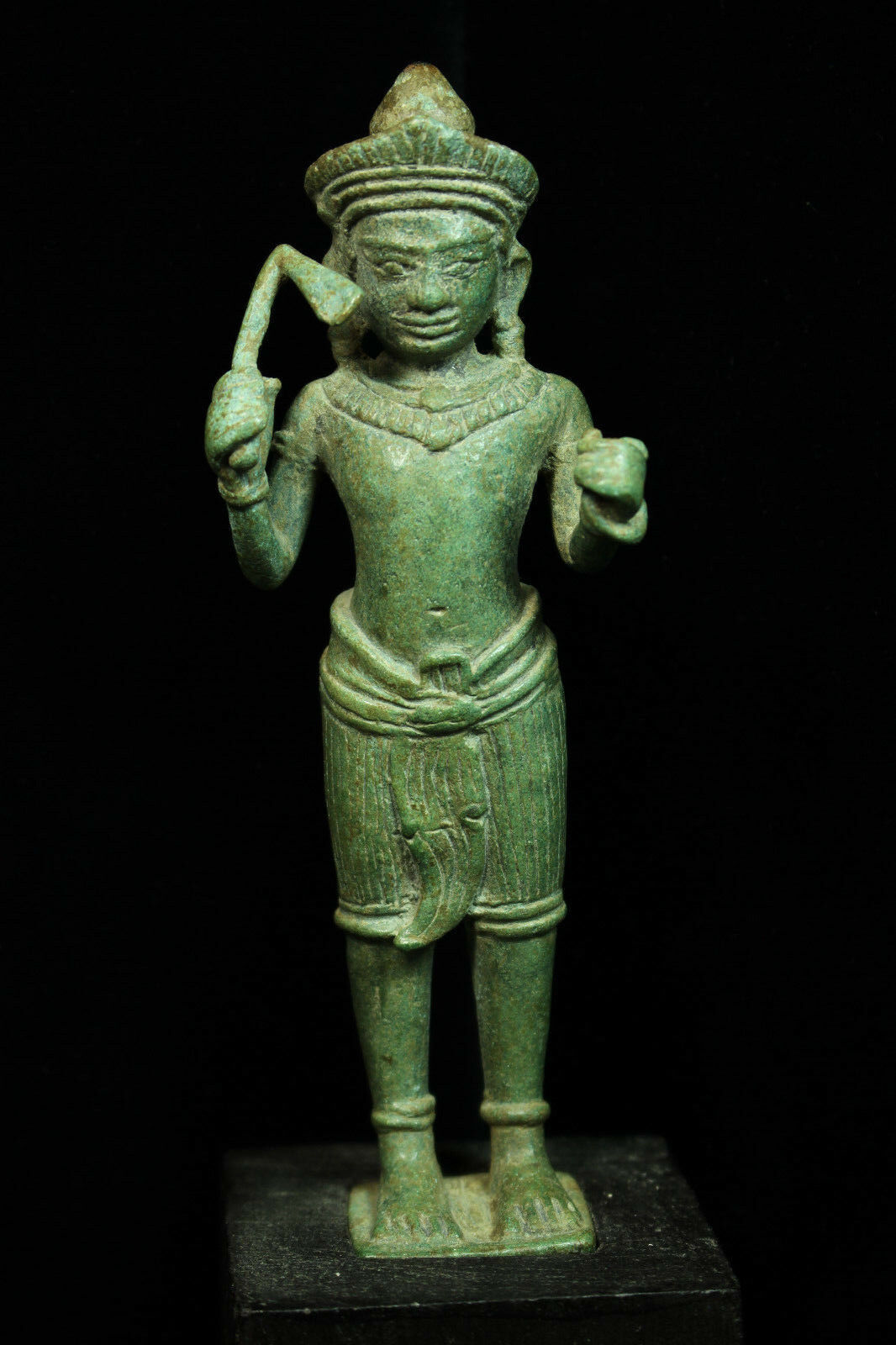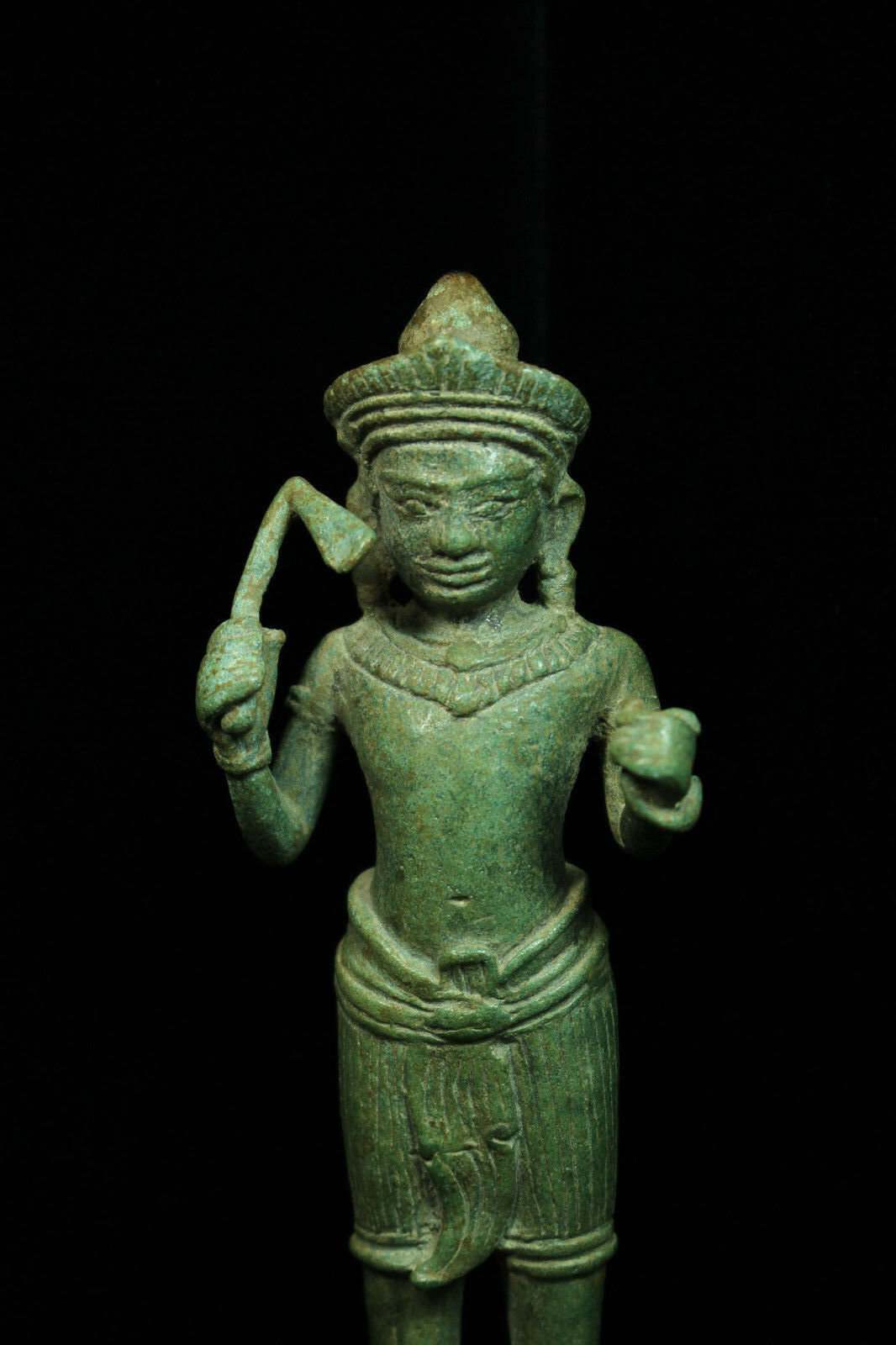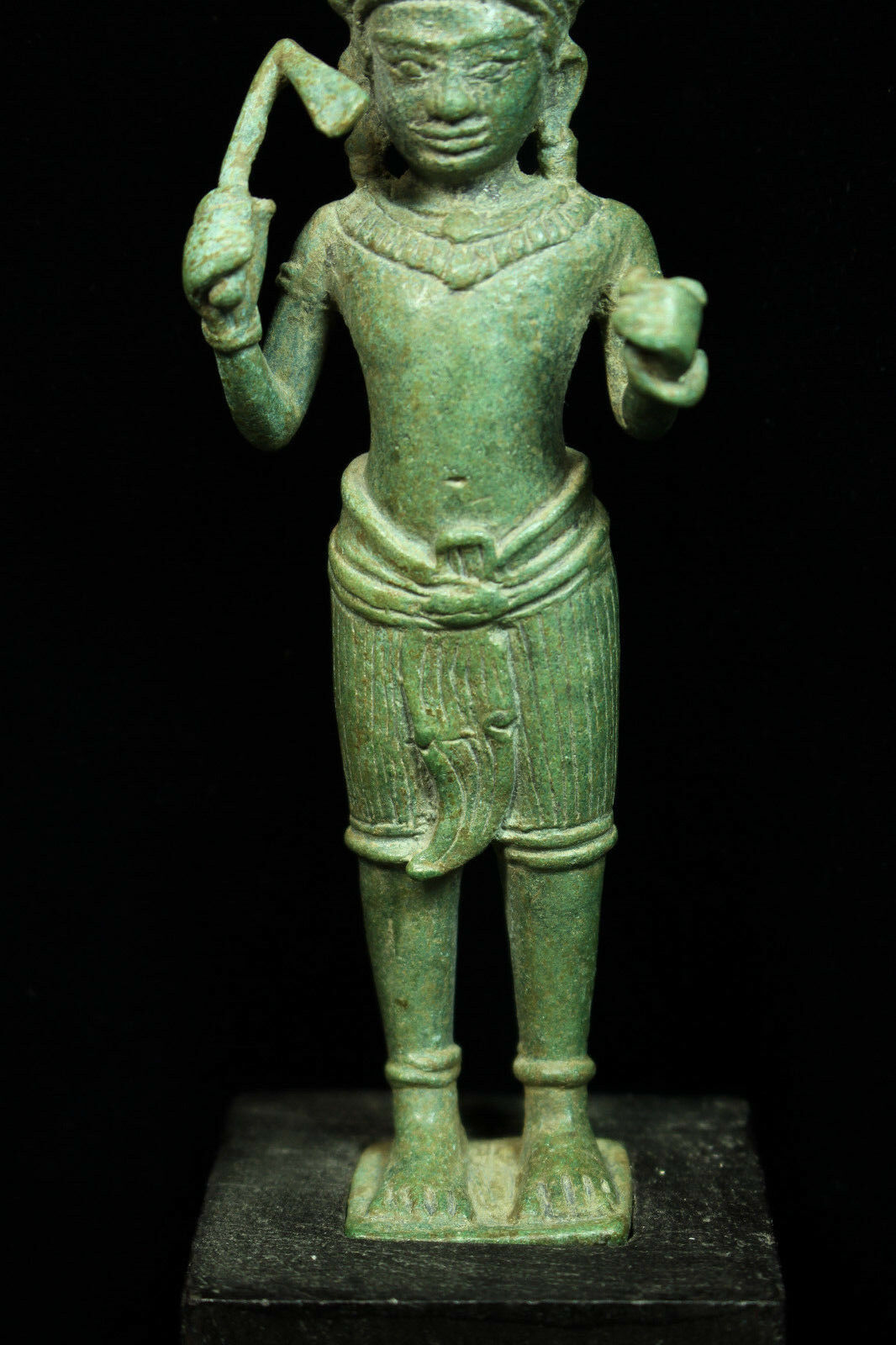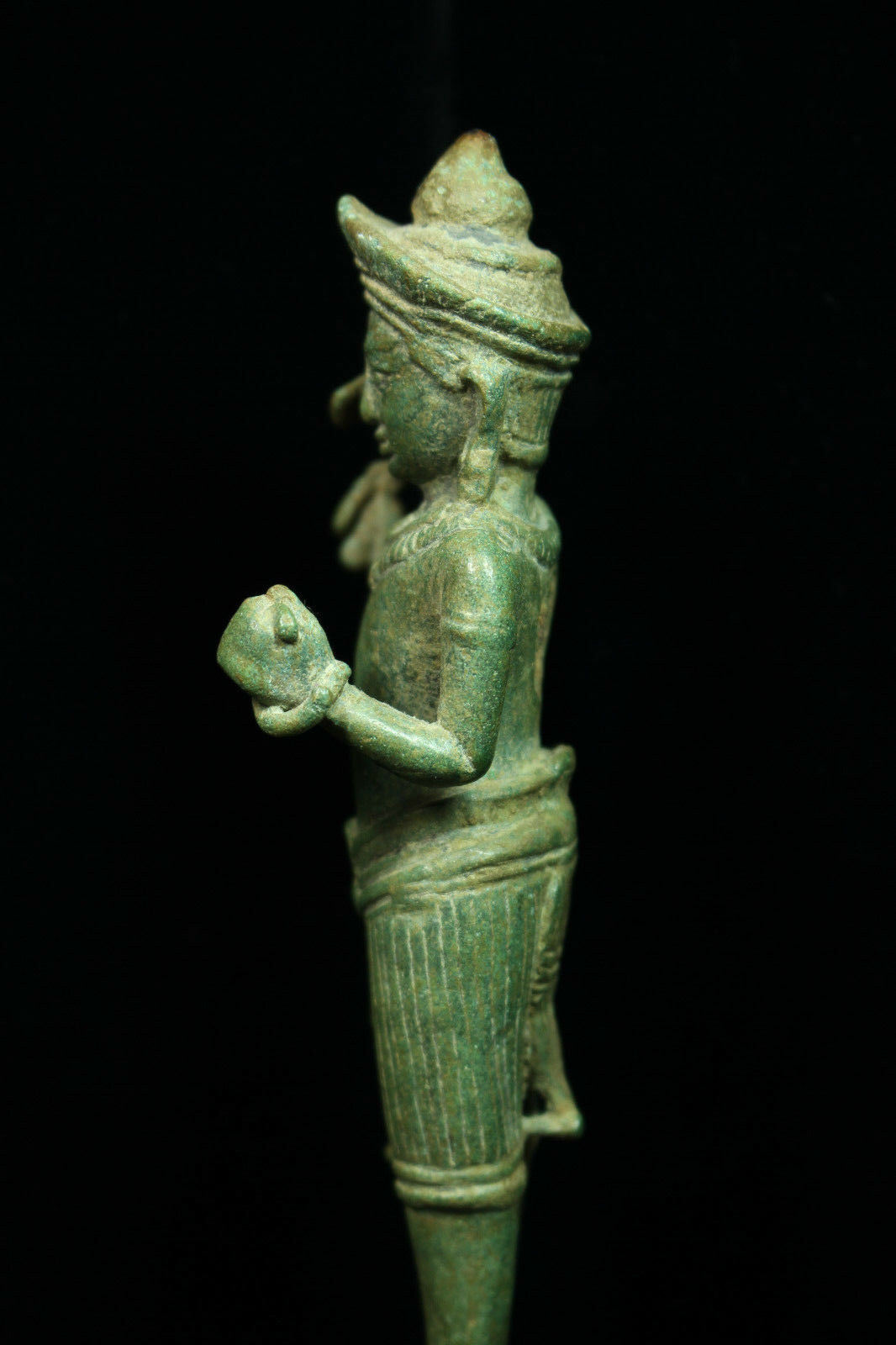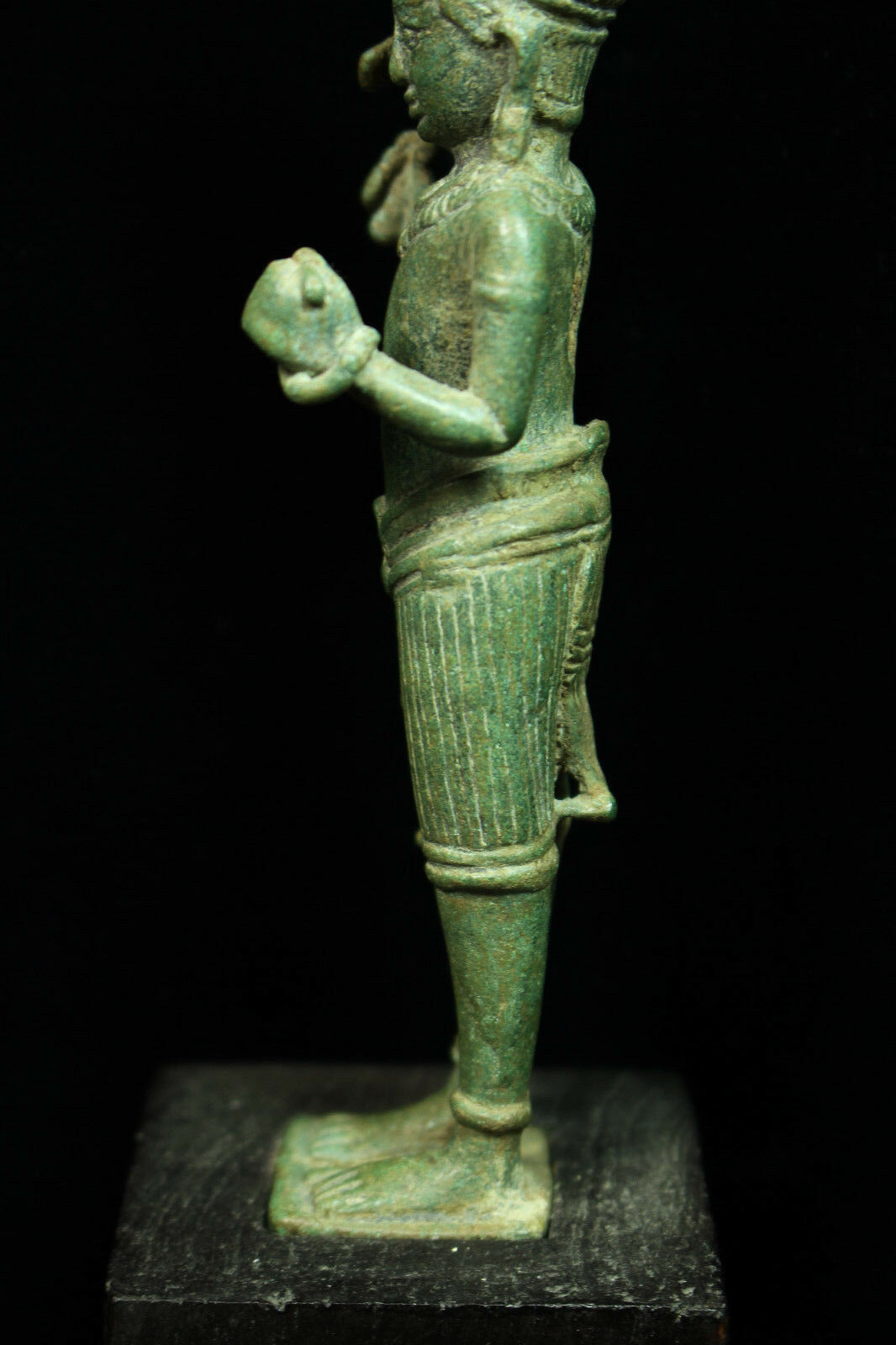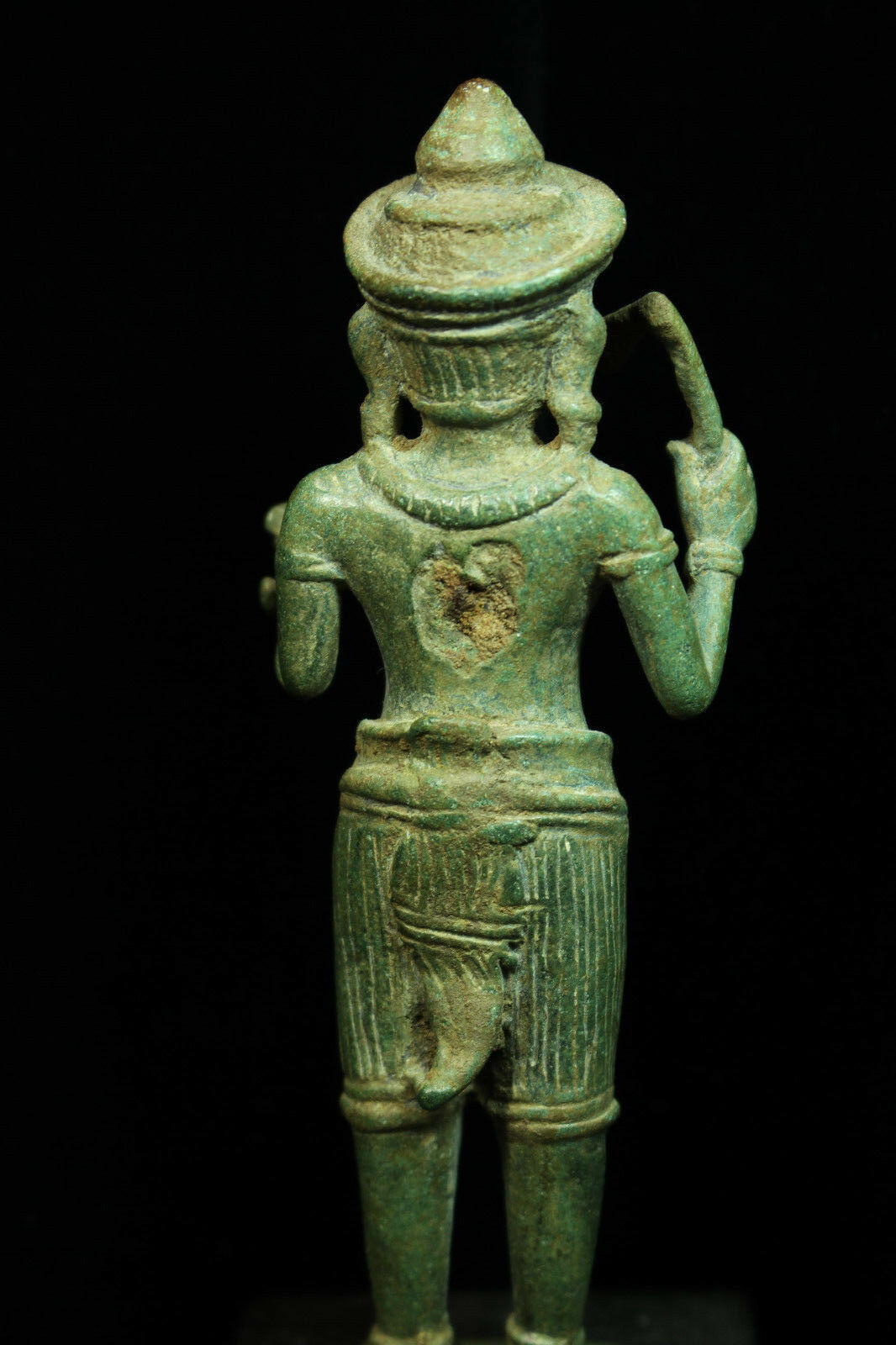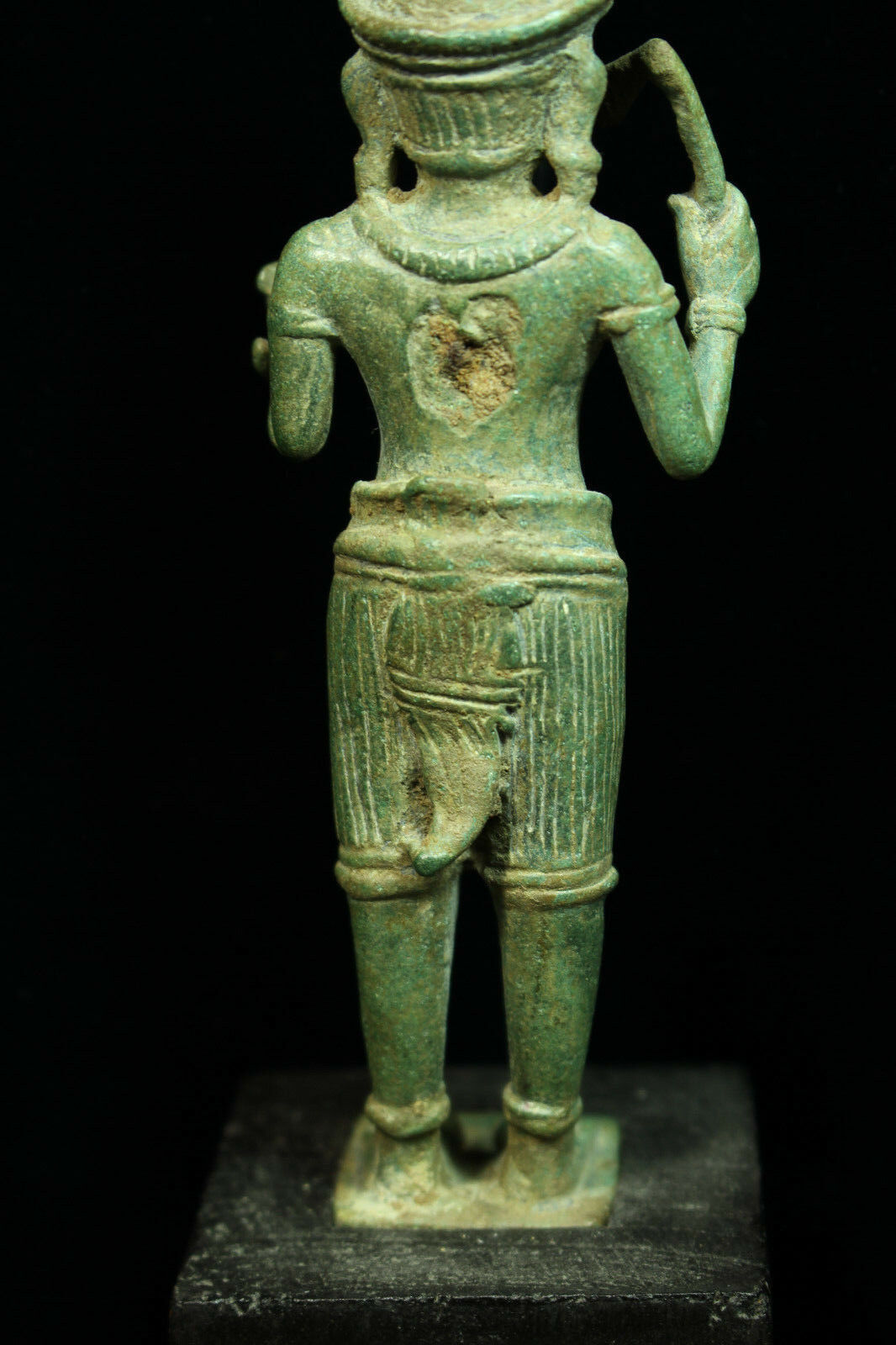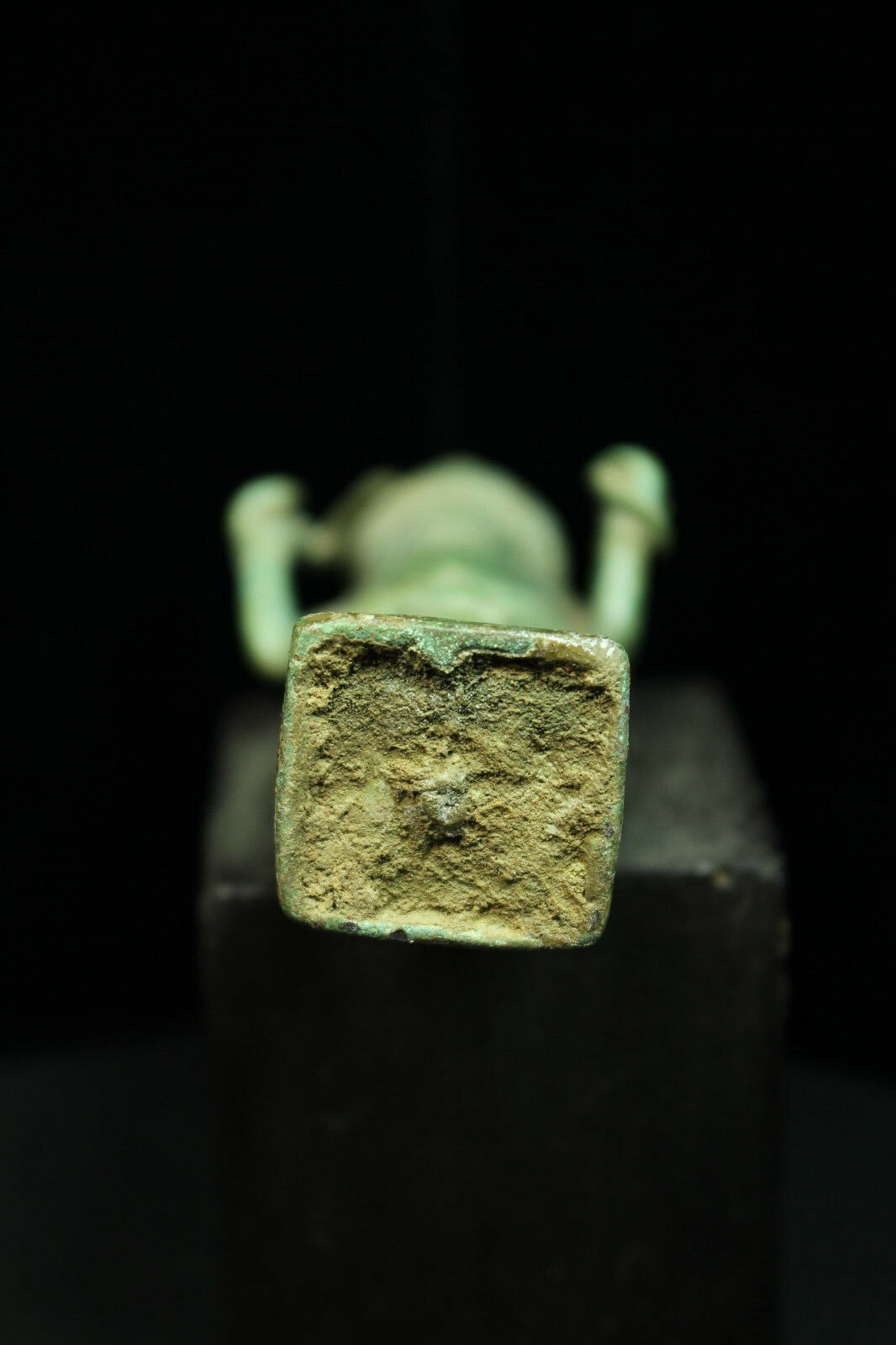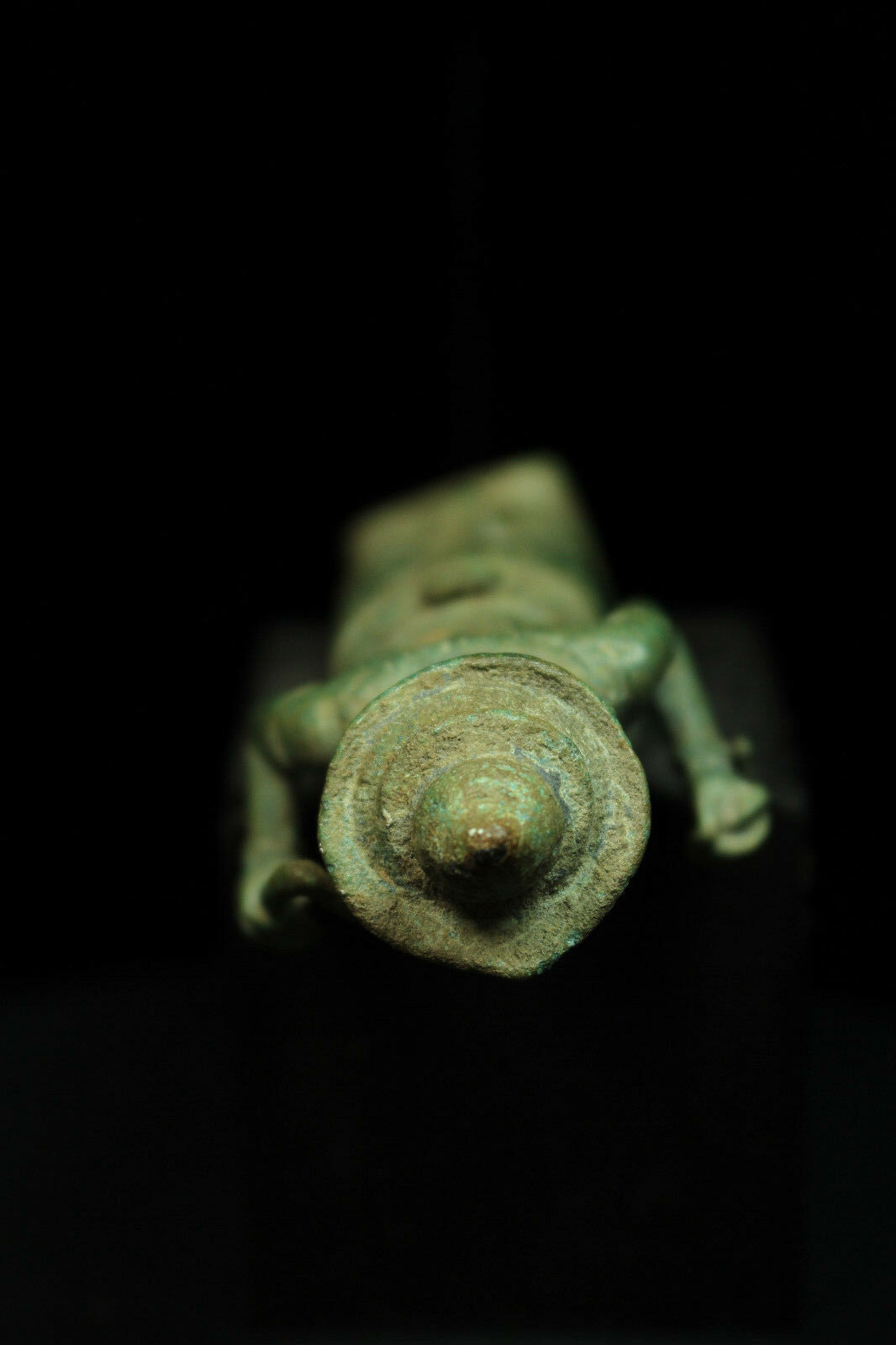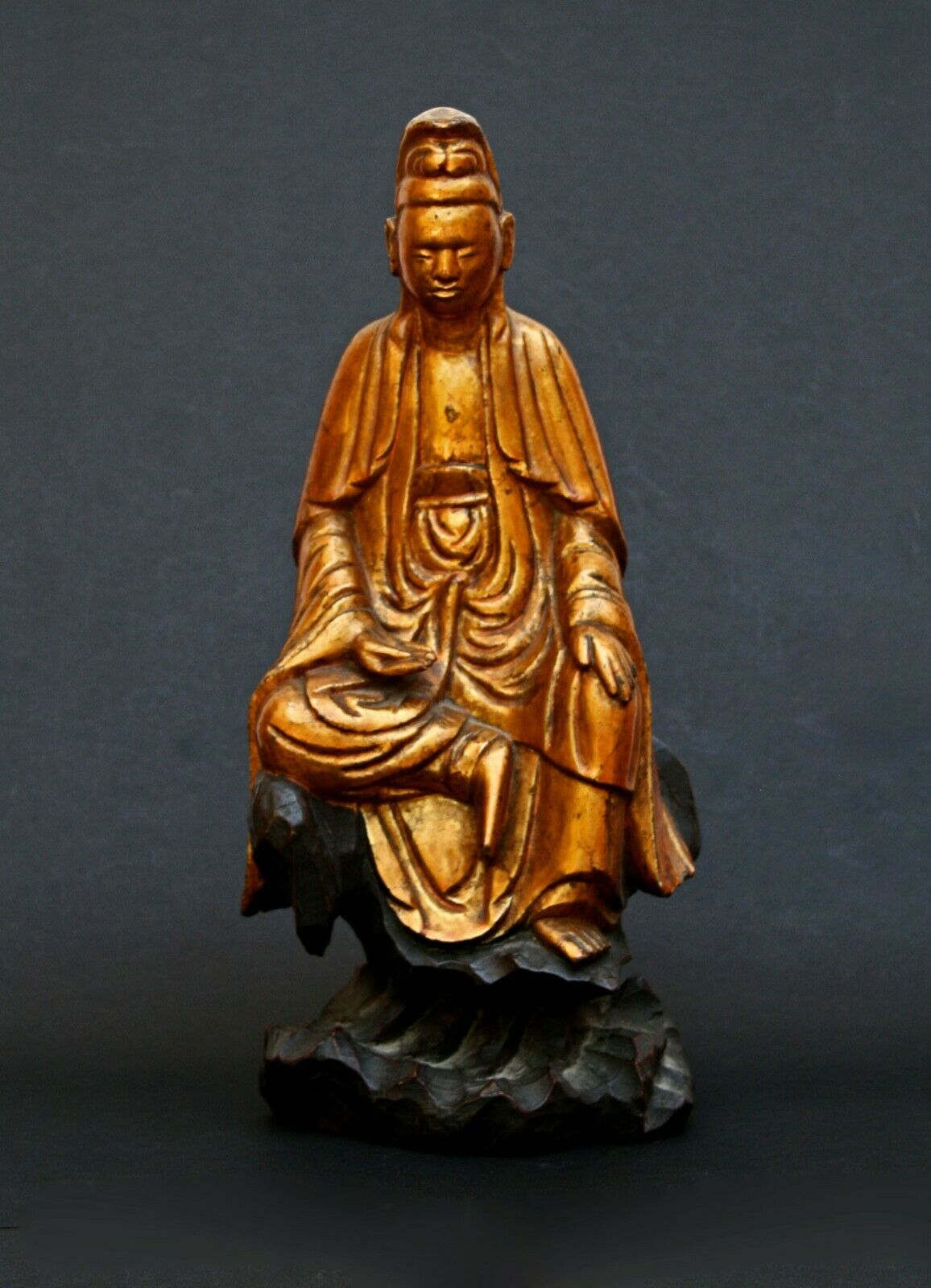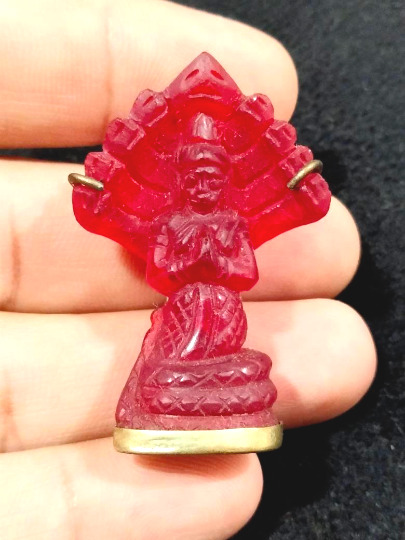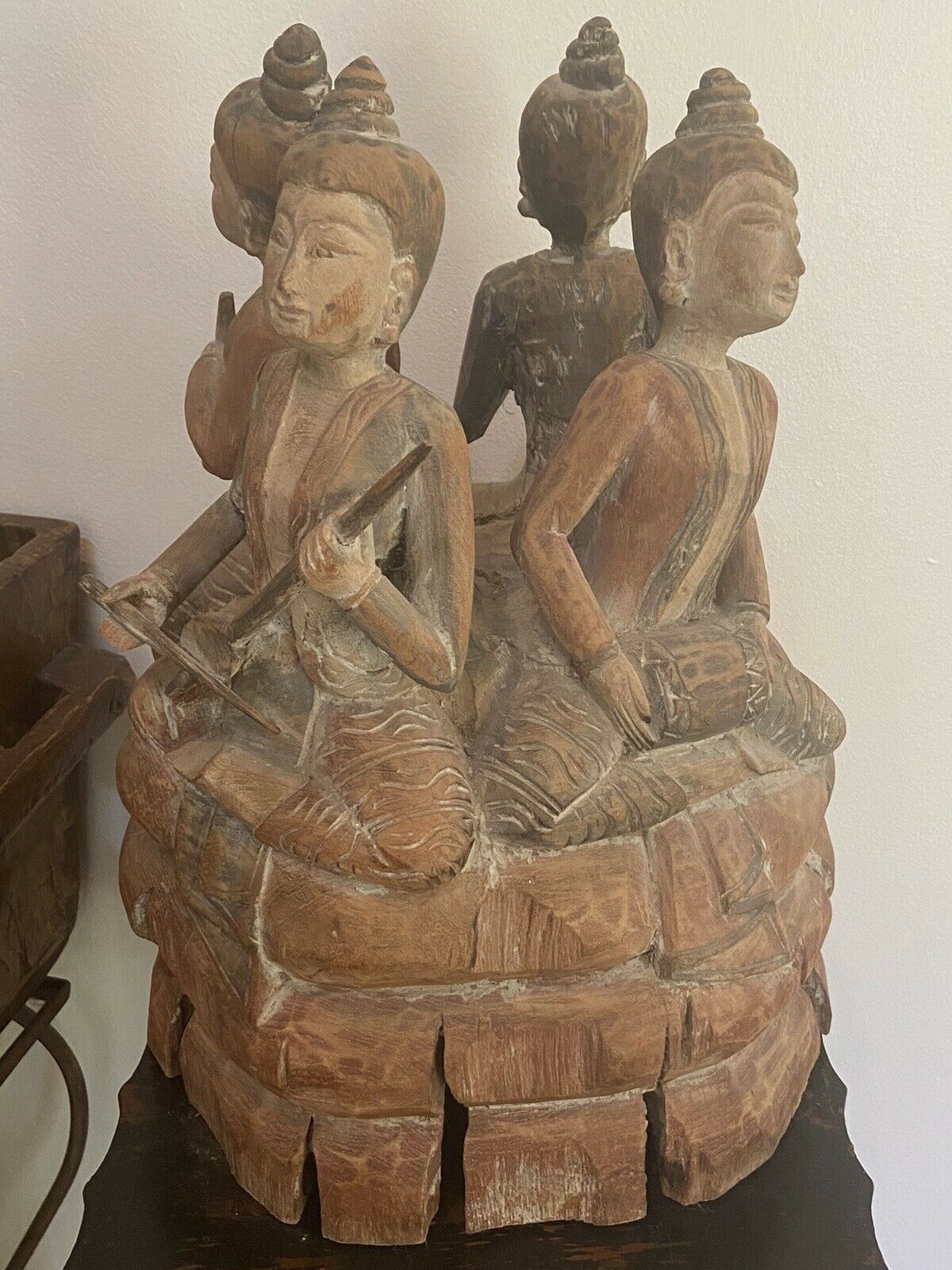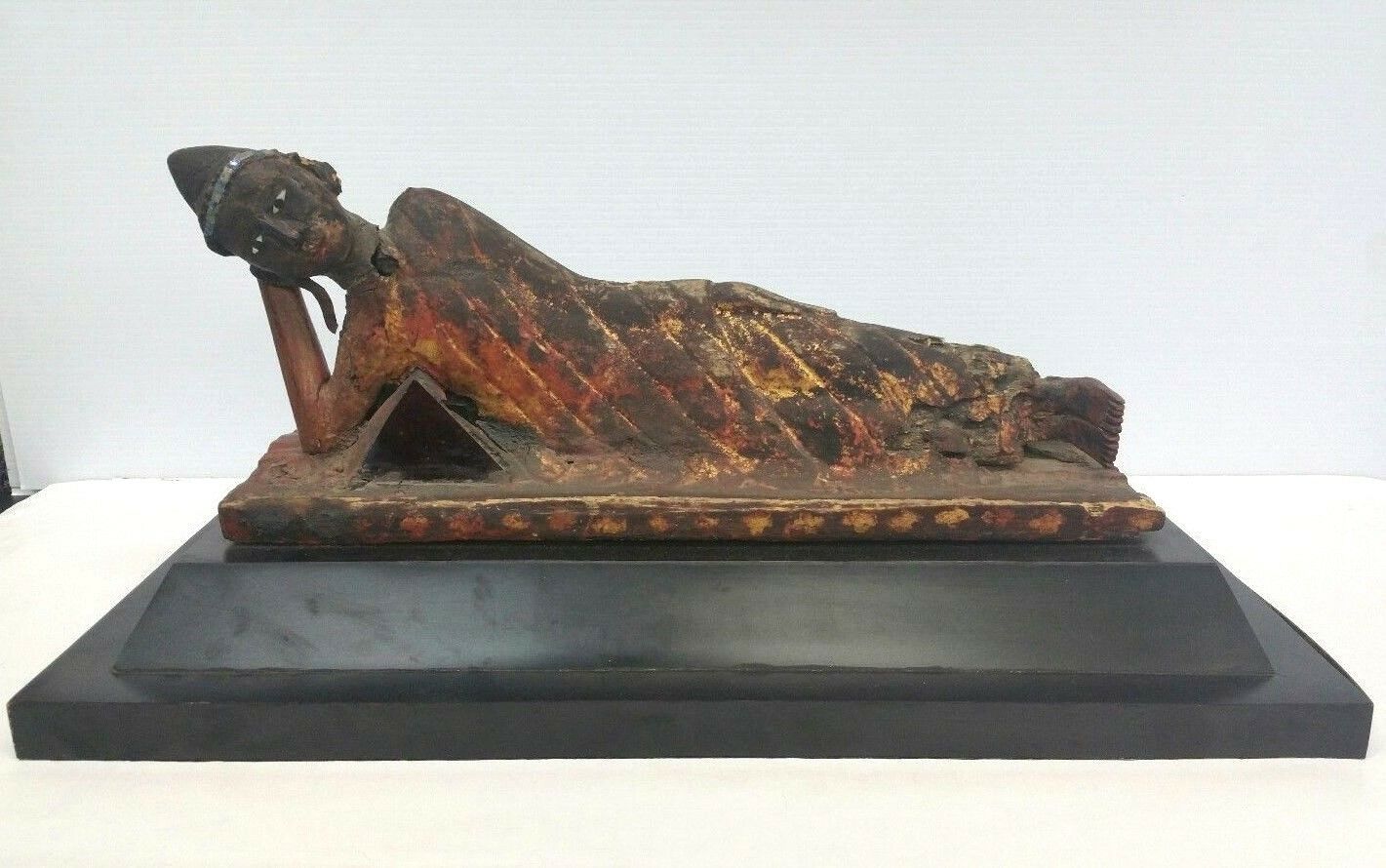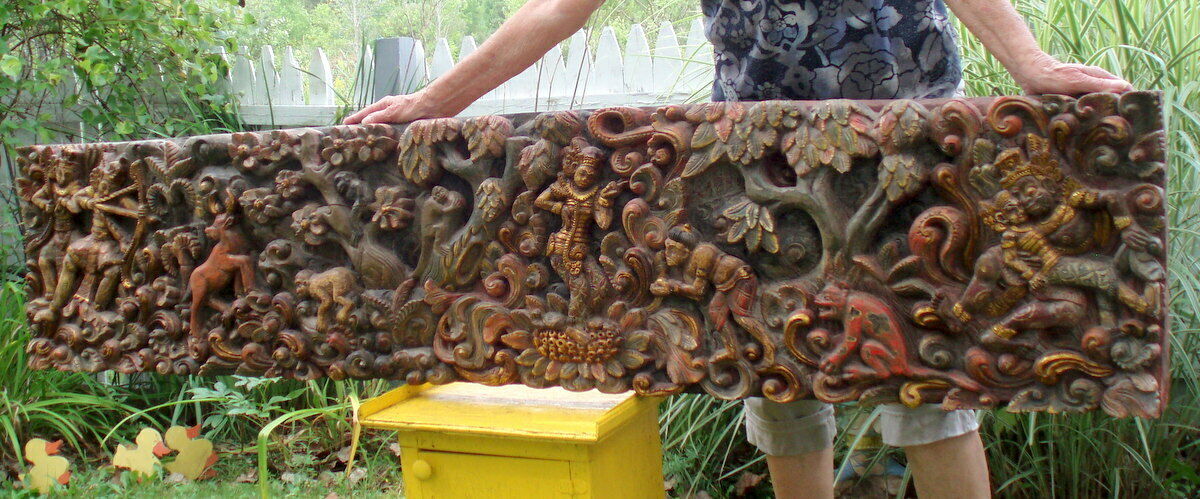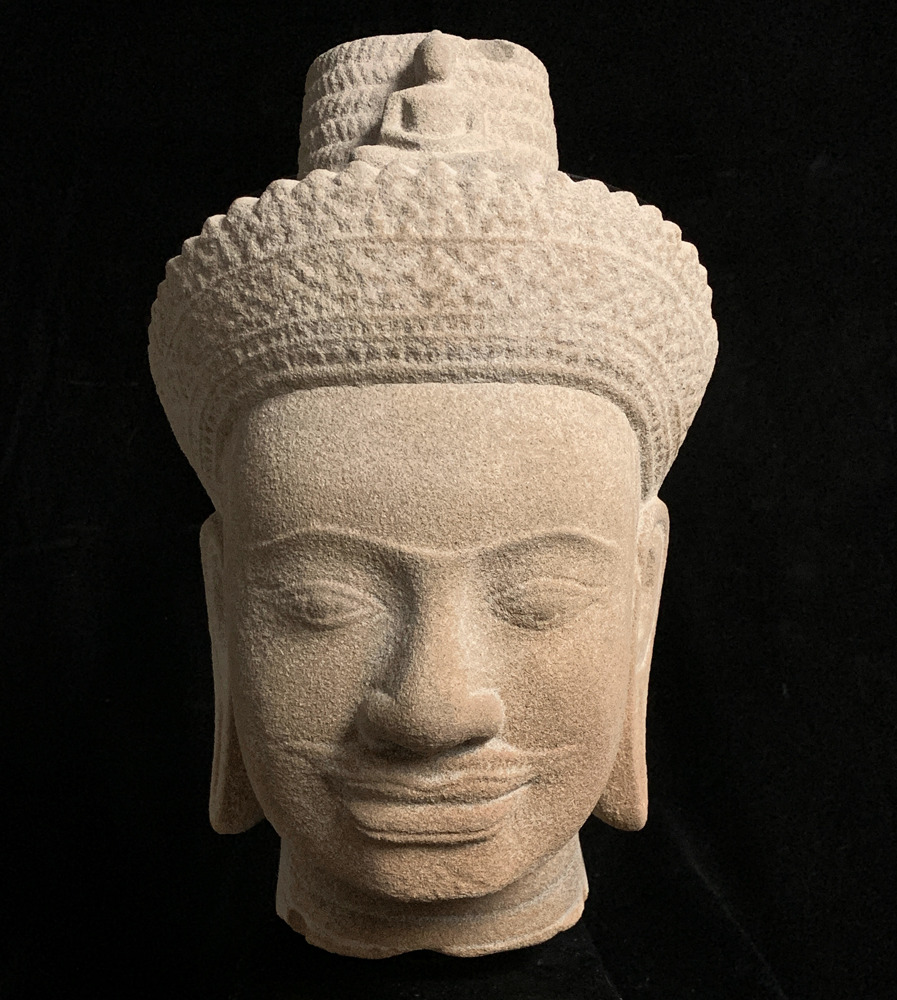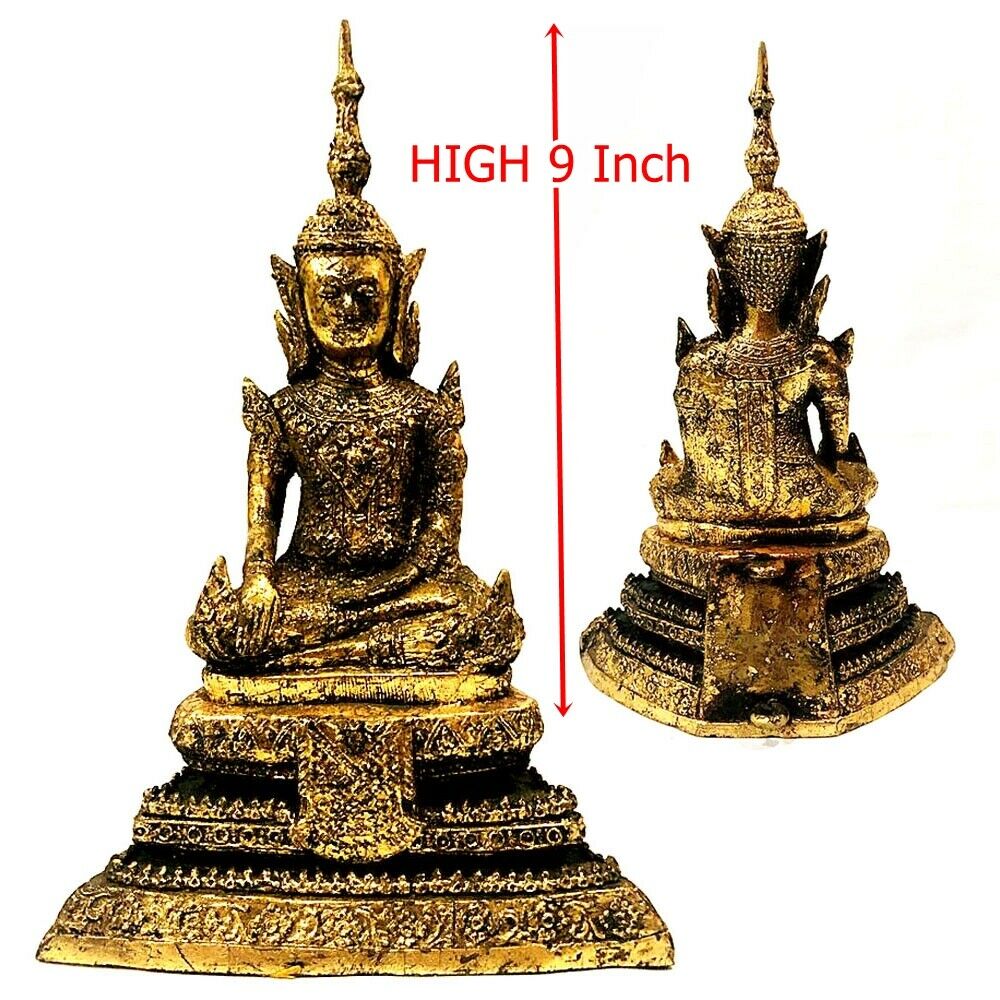-40%
Rare Ancient Khmer Bronze Statue of Avalokitesvara 12th cent. Bayon Style
$ 792
- Description
- Size Guide
Description
After 35 years of shuttling back and forth between California and Sri Lanka my life long pal Gordo is retiring to Sri Lanka and I'm helping him liquidate his collections of watches, Khmer bronzes and a house full of rare SE Asian pieces. So keep an eye on my seller page. Watches first then the Khmer bronze statues next. He needs help so I'm doing the listing and selling, combined with his extensive, firsthand, background information. If you have any questions, or need more photos, please let me know. There are no fakes or counterfeit pieces.KHMER BRONZE COLLECTION (general intro)
Khmer art is populated with images of gods and goddesses portrayed in the likeliness of members of the royal family and the nobility. Realism became a common denominator in Khmer art. Figures of Khmer divinities seem to exalt their human form. Both male and female figures are depicted bare-breasted, men in short pleated sampots (or sambots), women in long pleated sarongs. Because the figures themselves undergo only a few changes over the ages, their dating depends more on the evolution of draperies and the design of the ornaments both of which followed the fashion of the time.
At the time of the Khmer Empire (9
th
to 15
th
centuries) the art of bronze casting evolved to such a high degree of technical sophistication and artistry that even today modern technicians working in the field are still awed by what was accomplished over a thousand years ago! These statues were created using the “lost wax” technique of casting. The surface of all these ancient bronze statues will have some expected corrosion, weathering, wear, degradation and abrasions as a consequence of age and extended burial. Some original sedimentary mineral depositions will remain on parts of the surface of these bronze statues.
Angkor Wat was the temple complex at the center of the Khmer Empire. Bayon Wat, also situated in Angkor, was the last State sponsored temple to be constructed primarily as a Mahayana Buddhist shrine dedicated to the Buddha. It was the centerpiece of Jayavarman VII's massive program of monumental construction and public works, which was also responsible for the walls and naga-bridges of Angkor Thom and the temples of Preah Khan, Ta Prohm and Banteay Kdei. This was the origins of the “Bayon style” of Khmer art.
Angkor scholar George Coedès has theorized that Jayavarman VII stood squarely in the tradition of the Khmer monarchs in thinking of himself as a "deva-raja" (god-king), the salient difference being that while his predecessors were Hindus and regarded themselves as consubstantial with Shiva and his symbol, the lingam, Jayavarman VII as a Buddhist, identified himself with the Buddha and the bodhisattva
Following the death of Jayavarman VII the “Bayon style” suffered numerous additions and alterations at the hands of subsequent monarchs. During the reign of Jayavarman VIII in the mid-13th century, the Khmer empire reverted to Hinduism and its state temples were altered accordingly. In later centuries, Theravada Buddhism became the dominant religion, leading to still further changes, before many temples were eventually abandoned. And lost to the jungle for centuries, with unknown treasures still lost.
Presented here is a carefully selected 10 piece sampling of bronze art from that long lost period of time when the Khmer Empire flourished, far more technically and socially advanced than Europe of that age.
4)
“
Avalokitesvara
”, approx. 5 1/8” tall. 13
th
century A.D. Traditional Bayon style from the early 13
th
century from the Angkor period between 1177 and 1230. An outstanding example of how fine a patina can be. With only minor damage on the back of the figure, this is an excellent museum quality artifact with an outstanding green patina.
Standing in “Samabhanga”, crowned with a triple layered diadem and jeweled with necklace, armlets, bracelets, and anklets, wearing a traditional pleated sampot, high on the hips and low at the belly.
In the left hand is a rosary (akshamala: string of beads symbolizing never ending cycle.). In the right hand is a battle axe, ferociously held, symbolizing the severance of worldly attachments. In Hindu iconography it is the weapon held by Parasuram, the 6
th
Avatar of Vishnu.
Previously, in listings #1 to #4 I have gone into much detail concerning the traditional, often repeated stylish appearance of each figure. Since they are mostly Bayon style it’s probably enough by now so I will not go further into these redundant descriptions unless requested.
#5 of 10 in collection.
Insurance included with postal charge.
